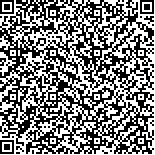Archive > Volume 39 Issue 7 > 2013,39(7):861-873. DOI:10.7519/j.issn.1000-0526.2013.07.007 Prev Next
Mesoscale Ambient Field Analysis of Torrential Rains and the Forecast Key Points in Guizhou in 2012
- Article
- Figures
- Metrics
- Preview PDF
- Reference
- Related
- Cited by
- Materials
Abstract:
Based on NCEP reanalysis data, FY 2E black body temperature TBB data, MICAPS types data, and the automatic station data in Guizhou, 15 torrential rains are classified into three types mainly. They are the convergence line frontogenesis type, the convergence line frontogenesis and cold air type, and the western Meiyu front type. Mesosclae ambient field analysis is used in each type of torrential rains to hold main influence systems. At the same time, the ingredients based forecasting methodology is used to analyze the water vapor and stability conditions as well as the uplift conditions in the extremely heavy rains. By means of analysis, we find the key points in different types of heavy rains. Those points are useful reference for the forecasting of heavy rains in Guizhou in future.
Keywords:
Project Supported:
Clc Number:


Mobile website









